"Surface" television can really be too hot in the television field of the past two years. It is already at a point where you have to pay attention to it. From the TV release announcement in 2015, it can be seen that basically every brand, including the increasingly hot Internet TV brands, has launched curved TV products, and it is not embarrassing to call it a "high-end" product. . According to statistics, in 2015, the sales volume of curved TV has reached 1.5 million units, an increase of more than 10 times. Curved TV can be said to have opened a new era of TV.
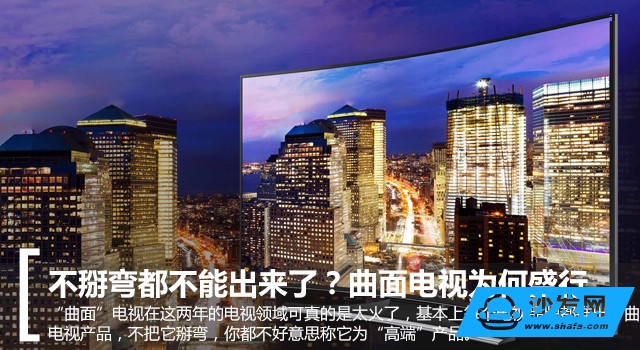
Why is the curved TV suddenly “famous overnight� In fact, many consumers have simple ideas when buying, fresh ... tall ... personality. After watching flat-screen TVs for several decades, suddenly came a distinctive surface, and the long-awaited heart suddenly burst into turmoil. Coupled with the "super immersive experience" mentioned in the brand promotion, "more in line with the viewing habits of the human eye", it is not difficult to understand why the curved surface TV market is so hot in recent years.
However, behind such a hot market, there are still many consumers are still blindly buying the state, so I think it is very necessary for everyone to popularize the knowledge about curved TV.

Curved TV seems to be famous overnight
First of all, at present, we can see that the surface TV can be divided into two kinds of LED and OLED. The screen of the LED curved television is changed by the external force of physical properties, not the original screen. It is in consideration of the yield factor of the physical curved screen that the thickness of the existing LED curved television is generally thicker than that of the flat panel television and the weight is heavier. However, as the technology matures, this flaw is continuously improved.
Samsung's SUHD TV series, launched at the beginning of last year, has reached the ultimate thinness of LED curved TVs. Judging from Samsung’s global sales record for the first time in recent years, the SUHD TV series has also guided the entire TV market. TCL has also introduced ultra-thin curved TVs last year, with a thickness of only 5.9mm, which is a good proof.

TCL C1-SCUD
There is also an OLED surface television. This screen, which is hailed as the future display technology, is inherently "flexible" and can bend straight. At the same time, since each pixel can be self-illuminated, it is different from the traditional backlight design, so the OLED screen can be very thin. The world's thinnest LG G6 OLED TV has reached an astonishing 2.57mm. However, due to the cost of OLEDs, the cost is much higher than that of ordinary LED screens, so in terms of price, the same level of OLED curved TVs is much higher than LED curved TVs.
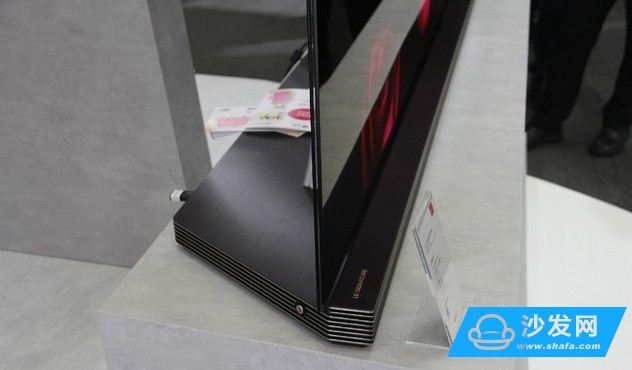
LG G6 TV
Speaking of a curved screen, the problem of curvature also wants to give everyone a little popularity. At present, most curved TVs use 4000R or 4200R curvature. How do you understand the curvature of different values? It is actually very simple. The smaller the curvature value, the more curved the screen. For example, the 4200R represents a circular radius of 4.2 meters. If the average viewing distance is 3.5 to 4 meters, then the viewer's eyes are exactly in the center of the circle, making the distance between the human eye and the screen equal. The best viewing experience.
I believe that after watching the author give everyone the popularity of surface TV knowledge, we must all have a preliminary understanding of curved TV, then the value of curved TV is not worth buying? What are the highlights and defects? And see below analysis.
Curved TV in the end rely on not fly?
Regardless of whether it is online or offline, manufacturers often attract consumers by “super immersive experience†and “more consistent with human eye viewing habits†when promoting curved TVs. At this point, manufacturers do not have "flicker" users. First of all, from a comparatively scientific point of view, the curved surface television can stimulate the human eye rod cells to expand the viewing angle of the picture, and thus can obtain a stronger sense of immersion than the flat television. At the same time, the curved screen design on both sides of the curved television screen makes the visual image range wider, and therefore has similar audio and video effects to the large-sized television.

Super immersive experience
We all know that the human eyeball is a sphere and the eye mask is also in a curved state, so an object in the plane may actually be bent when imaging through the eyeball. However, the curved TV can eliminate this kind of visually induced bending, which is more in line with the human eye structure to make the eyes more comfortable. When viewing pictures on a curved television, the picture seen is more consistent with the structure of the eyes, and is more in line with humans' audiovisual habits. Such comfort is not provided by flat-screen televisions.
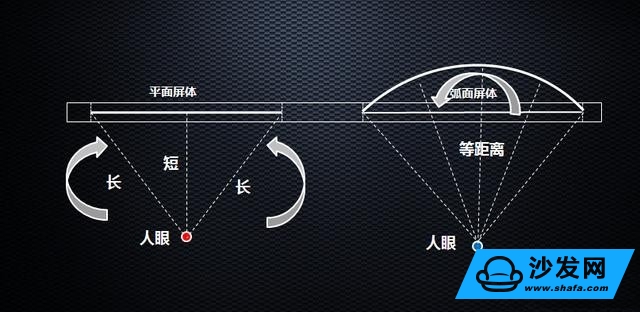
Curved screen more in line with the needs of the human eye
At the same time, curved TV has a very obvious advantage, that is, the contrast is even better. The curved TV can show the vivid quality of each corner. The brightness contrast between the left and right sides of the screen is 45% higher than that of the flat-panel TV, making the black even more pleasing and bright and bright. According to the results of CESI (China Electronics Standardization) monitoring and certification, surface televisions have been improved in brightness uniformity, contrast, and distortion rate to a different extent than flat LCD TVs.
But is the curved TV really perfect and there are no flaws? Obviously not. Further advanced technology also has its shortcomings, and even more advanced technology will have drawbacks, as does curved surface television.
First of all, from the screen, many people think that LCD panels don't work well with curved TVs. This misunderstanding is caused by LCDs that are not suitable for curved TVs. Some people may have misunderstood that the LCD screen is forced to fold into a curved surface form by physical force, so there will be technical limitations, such as the screen light or backlight uneven, in fact, these issues are not absolutely related to the use of LCD panels, Instead, the alignment of the liquid crystals should be confirmed such as VA (vertically aligned liquid crystals) and non-VA (horizontally aligned liquid crystals).
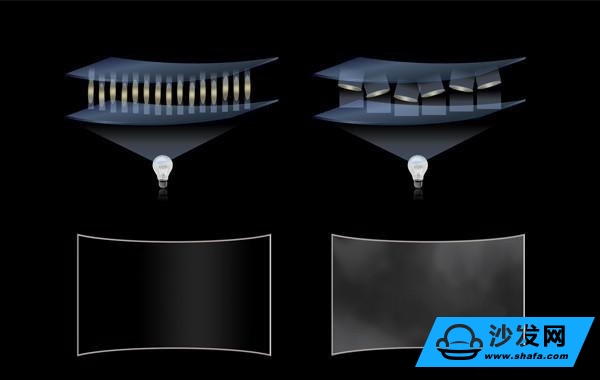
VA and Non-VA Liquid Crystal Molecular Arrangement
The display is roughly divided into VA screens and non-VA screens. This is the kind of LCD that is distinguished according to the arrangement of the liquid crystals. The VA panel liquid crystal molecules are arranged vertically rather than horizontally aligned with the VA panel. In flat-panel TVs, the difference between the two panels is not obvious. However, in a curved TV, when the non-VA panel liquid crystal molecules are arranged horizontally and subjected to a large external force, the arrangement becomes distorted with the curvature of the screen, and the liquid crystal molecules arranged vertically in the VA panel are not arranged in an orderly manner.
Non-VA horizontal alignment of the liquid crystal molecules in the curved state after the deformation will make the screen display a lot of problems. Such as the screen light, uneven backlight, and so on. The curved TV of the VA panel does not have these problems, and has the advantage of a natural curved surface and the most suitable technique for a curved television.

OLED screen
OLED is hailed as the future display technology. At present, many OLED curved TV products can be seen in the market. However, OLED technology has not yet been fully matured. It is difficult to draw conclusions on the question of service life. OLED display technology in the screen more than 20,30 inches, to TV panel size, OLED problems are many, many years have not been resolved, such as the short life of the light, not natural and other technical constraints, so OLED Today, there are truly small-screen areas under 10 inches, such as smart phones and small-sized display devices.
At present, many companies are making efforts to introduce OLED technology. However, due to problems such as uncertain technical routes and low yields of large-size OLEDs such as TVs, it has been difficult to produce in large quantities.
Compared with OLED technology, LCD technology is mature, and can also achieve curved surface effects, which is the main reason for LCD TV manufacturers to launch curved TV.
It's time to buy a curved TV so popular
Today, TV has experienced several changes. From the earliest CRT picture tube TVs to the smash hits of rear projections, plasma TVs, and even the most popular liquid crystals today, there are display technologies such as OLEDs, HDRs, Quantum Dots, etc., which are rapidly developing. With the increasing demand for watching movies, the screen has evolved from the previous sphere to the plane, and now the surface we talked about, the evolution of television has never stopped.
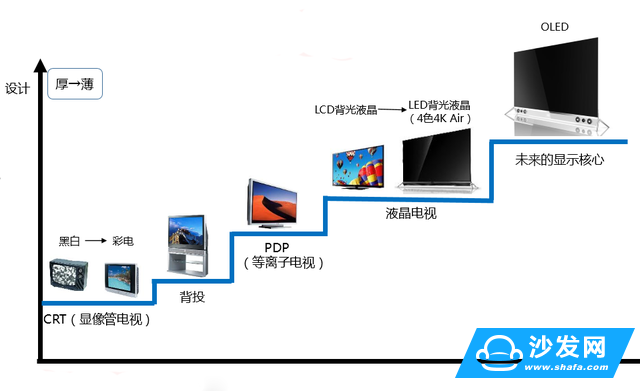
TV history
People's curiosity about new things is very strong. With the emergence of new display technologies or displays, most consumers will be concerned. But at the same time, whether it really needs to be purchased when it is not in the pursuit, so the author summarizes two points for everyone to see if you really need to buy curved TV.

Pay attention to cost
The first thing to say is price/performance. At present, there are still many deficiencies in LED curved TV or OLED curved TV, which we mentioned in the above. Although the appearance looks even taller, but the overall strength is not far more than flat-panel TVs. If you are a pure consumerist, it's understandable to buy big-ticketed curved TVs at great prices. However, from the perspective of rational consumers, it is better to purchase flat-panel TVs at a higher price than to choose flat-panel TVs of the same level. No matter whether it is in performance or image quality, it will not lose to curved TV.

Curved TVs are not for everyone
The second thing that needs to be considered is personal needs. If you are a movie enthusiast and you really like to watch movies and you want to enhance the viewing experience, then curved TV is a good choice. If you are an ordinary user, for the audio and video is not so "extreme" requirements, flat-panel TVs can absolutely meet your conditions. Moreover, judging from the current development of television, if curved TVs completely replace flat-panel TVs in a short time, I am afraid there is still a long way to go.
JIANGMEN LEDERLIGHT LIGHTING Co.,LTD , https://www.lederlightcn.com